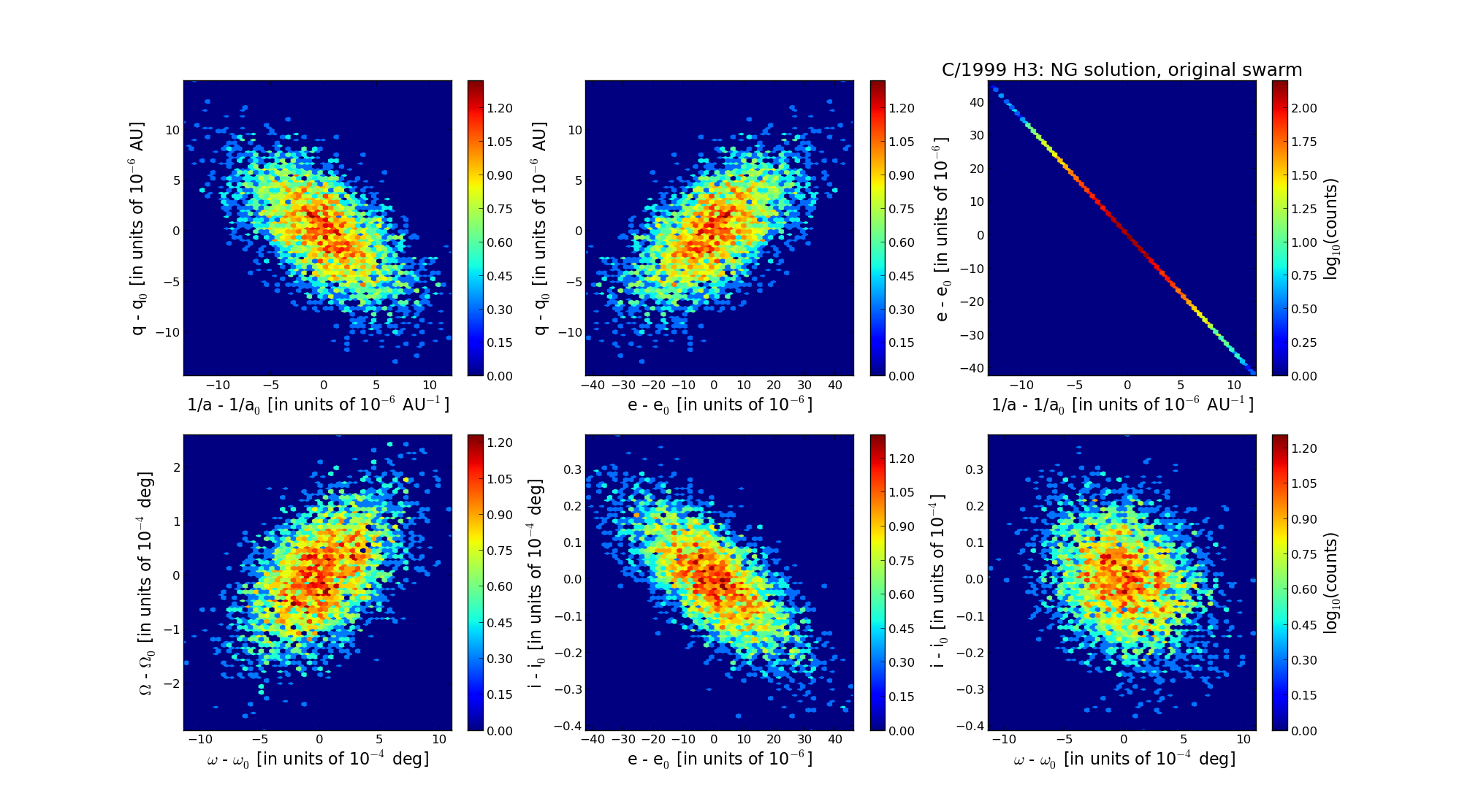| Solar System Dynamics & Planetology Group |
 |
C/1999 H3 LINEAR |  |
| Solar System Dynamics & Planetology Group |
 |
C/1999 H3 LINEAR |  |
| number of observations | 877 |
| number of residuals | 1722 |
| data interval | 1999 Apr. 22 — 2002 Mar. 20 |
| rms [arcsec] | 0.51 |
| orbit quality class | 1a |
| Epoch (TT) | 19990810.0 | = JD 2451400.5 |
| time of perihelion passage (TT) | 19990818.241961 | ± 0.000870 |
| perihelion distance | 3.50080910 | ± 0.00000249 |
| eccentricity | 1.00269373 | ± 0.00000619 |
| argument of perihelion [deg] | 101.912685 | ± 0.000199 |
| longitude of the ascending node [deg] | 332.723748 | ± 0.000035 |
| inclination [deg] | 115.840364 | ± 0.000012 |
| inverse semimajor axis [10-6 au-1] | -769.46 | ± 1.77 |
| Nongravitational parameters [10-8 au/day2] | A1 = 4112 ± 193 | A2 = 3007 ± 228 | A3 = -509.0 ± 72.0 |

| Epoch (TT) | 16950803 | |
| time of perihelion passage (TT) | 19990817.116521 | ± 0.001361 |
| perihelion distance | 3.50442230 | ± 0.00000377 |
| eccentricity | 0.99956311 | ± 0.00001359 |
| argument of perihelion [deg] | 101.831498 | ± 0.000316 |
| longitude of the ascending node [deg] | 332.721955 | ± 0.000075 |
| inclination [deg] | 115.908160 | ± 0.000011 |
| inverse semimajor axis [10-6 au-1] | 124.67 | ± 3.88 |
| Epoch (TT) | 23020203 | |
| time of perihelion passage (TT) | 19990817.978459 | ± 0.000410 |
| perihelion distance | 3.50201708 | ± 0.00000330 |
| eccentricity | 1.00003511 | ± 0.00000368 |
| argument of perihelion [deg] | 101.885230 | ± 0.000090 |
| longitude of the ascending node [deg] | 332.815367 | ± 0.000010 |
| inclination [deg] | 115.893722 | ± 0.000015 |
| inverse semimajor axis [10-6 au-1] | -10.02 | ± 1.05 |